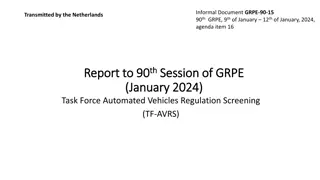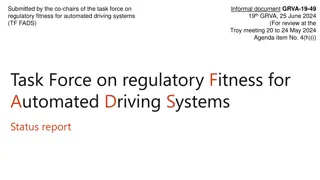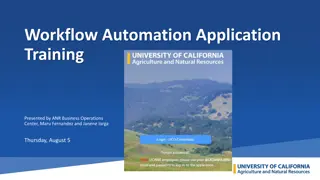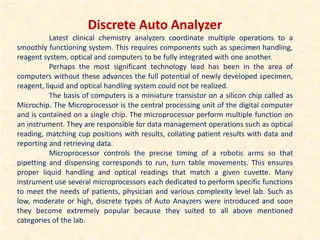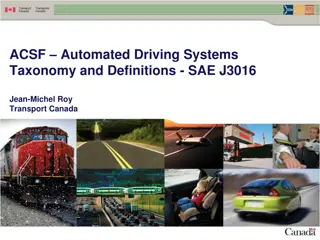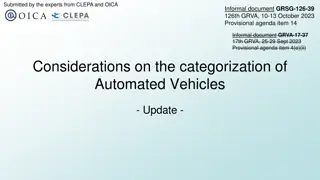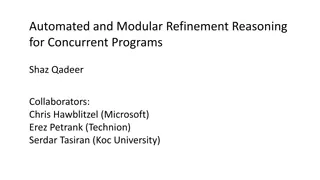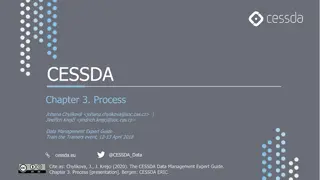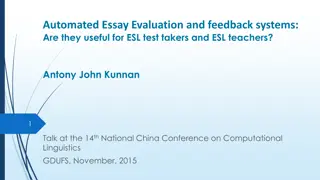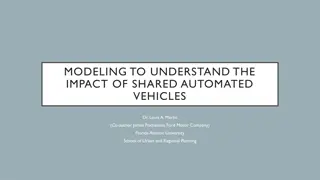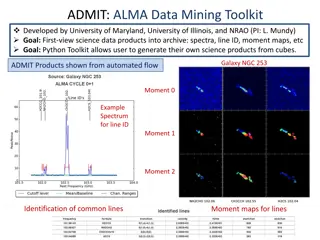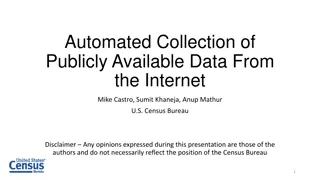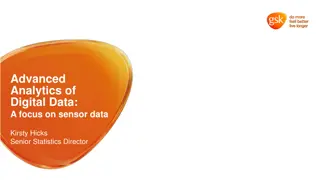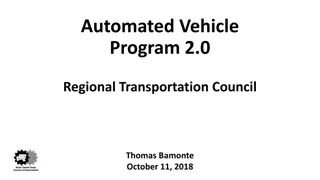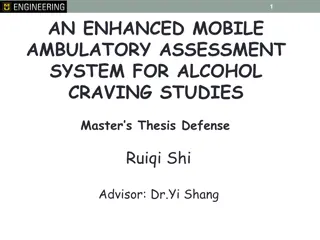Automated Management and Analysis of Actigraphy Data
This study presents ACTman, an automated system for managing and analyzing actigraphy data. Actigraphy, which measures movement, provides valuable insights into physical activity, sleep, and 24-hour rhythms, crucial for research and diagnosing health conditions. Actigraphy offers advantages like non-invasiveness, ambulatory use, ease of use, and cost-effectiveness. The study discusses examples of both nomothetic and idiographic studies utilizing actigraphy data for various research questions.
Download Presentation

Please find below an Image/Link to download the presentation.
The content on the website is provided AS IS for your information and personal use only. It may not be sold, licensed, or shared on other websites without obtaining consent from the author.If you encounter any issues during the download, it is possible that the publisher has removed the file from their server.
You are allowed to download the files provided on this website for personal or commercial use, subject to the condition that they are used lawfully. All files are the property of their respective owners.
The content on the website is provided AS IS for your information and personal use only. It may not be sold, licensed, or shared on other websites without obtaining consent from the author.
E N D
Presentation Transcript
ACTman: Automated management and analysis of actigraphy data Yoram K. Kunkels, MSc1*, Stefan Knapen, MSc2, Marij Zuidersma , PhD1, Marieke Wichers , PhD1, Harri tte Riese, PhD1, & Ando Emerencia, PhD3 1Interdisciplinary Center Psychopathology and Emotion regulation (ICPE), Department of Psychiatry, University of Groningen, University Medical Center Groningen, Groningen, The Netherlands, 2 University of Groningen, University Medical Center Groningen, Department of Psychiatry, Research School of Behavioural and Cognitive Neurosciences (BCN), Interdisciplinary Center for Psychopathology and Emotion regulation (ICPE), Groningen, the Netherlands, 3University of Groningen, University Medical Center Groningen, University Center for Psychiatry, Interdisciplinary Center Psychopathology and Emotion Regulation (ICPE), The Netherlands. *Presenting author
2 / 29 Overview Quick introduction into Actigraphy Dealing with (Big) Data Data (pre-)processing Actigraphy Software ACTman Introduction
3 / 29 Quick introduction into Actigraphy First of all, the actigraph measures movement. From that derive knowledge about physical activity, sleep, and 24h rhythm. Important for research and diagnosis in the light of (mental) health!
4 / 29 Quick introduction into Actigraphy Actigraphy offers a number of distinct advantages: Non-invasive Can be performed ambulatory Easy in use Relatively cheap
5 / 29 Quick introduction into Actigraphy Examples of nomothetic studies Study Participants Actigraphy Research question Rotterdam Study 1714 older persons from the general population 14 days What is the association of sleep and circadian rhythm with depression and anxiety? NESDA 400 participants: depressed, healthy, and siblings 14 days Are there group differences (depressed/siblings/health controls) in daily patterns of affect and physical activity? TRAILS next 400 children of 2.5 years of age 1 day Is hyperactivity or hypoactivity at the age of 2.5 years a predictor of future psychopathology?
6 / 29 Quick introduction into Actigraphy Examples of idiographic studies Study MOOVD Participants 10 depressed and 10 nondepressed individuals 15 demented persons Actigraphy 30 days Research question Temporal relation between physical activity and affect for individuals What is the temporal relation between sleep and agitation for demented patients? What is the impact of activity on critical transitions in depression? (recovery) Sleep & Agitation TRANS-ID Recovery 63 days 45 currently depressed patients starting AD treatment 120 days TRANS-ID Discontinuatio n Switch-BD 45 remitted patients discontinuating of pharmacological antidepressants 20 bipolar disorder patients 120 days What is the impact of activity on critical transitions in depression? (potential relapse) Do Sleep Wake patterns Change mood in Bipolar Disorder? 180 days
7 / 29 Accelerometer Processing Using a microelectromechanical system (MEMS): 1. The data is subjected to bandwidth filtering (3-11Hz) to remove noise. 2. The peak acceleration (either positive or negative) during each second is recorded. 3. This is compared to a minimum "not moving" threshold of approximately 0.1g. Lower values are ignored. 4. The result from each second is summed over the epoch and scaled to produce a standard result in controlled jig testing. This value is then recorded as the MotionWatch count for the epoch.
8 / 29 But to do these Analyses, we need Data
9 / 29 Dealing with (Big) Data Large datasets can yield a lot of information but it is easy to become overwhelmed.
10 / 29 Dealing with (Big) Data - Problems Exhaustive and time-consuming process. Sometimes lots of manual work. Reproducibility issues
11 / 29 (Big) Data - From Raw to generic data formats Raw data might come in a multitude of formats
12 / 29 (Big) Data - From Raw to generic data formats Raw data might come in a multitude of Data types .MTN files .TXT files .CSV files .BIN files .XML files etc.
13 / 29 (Big) Data - From Raw to generic data formats But in the end we only need output with: Timestamp Activity counts
14 / 29 (Big) Data - From Raw to generic data formats But lots of (pre-)processing may be required to get generic data! Date and Time formatting Data Selection Combining Data
15 / 29 Pre-processing - Dates & times Date and Time issues: Dates format Summer- / wintertime corrections Timezone corrections
16 / 29 Pre-processing - Data Selection Data selection considerations: Do you need only full 24h parts? When does a day in your data start and end? From dataset start time (e.g. 2017-01-16 16:34:00)? From midnight (e.g. 2017-01-16 00:00:00)? What to do with non-wear at start and end?
17 / 29 Actigraphy Software
18 / 29 Actigraphy Software Proprietary Software: MotionWatch 8 & MotionWare Actiwatch 2 & Actiware, etc.
19 / 29 Actigraphy Software Open Source R packages nparACT: Non-Parametric Measures of Actigraphy Data Actigraphy: Actigraphy Data Analysis PASenseWear: Summarize Daily Physical Activity from 'SenseWear' Accelerometer Data pawacc: Physical Activity with Accelerometers PhysicalActivity: Process Physical Activity Accelerometer Data acc: Exploring Accelerometer Data accelerometry: Functions for Processing Minute-to-Minute Accelerometer Data GGIR: Raw Accelerometer Data Analysis HMMpa: Analysing accelerometer data using hidden Markov models PAactivPAL: Summarize Daily Physical Activity from 'activPAL' Accelerometer Data accelmissing: Missing Value Imputation for Accelerometer Data ACTman
20 / 29 The Goal of ACTman is: 3-Step, turn-key, Data Management and Analysis Tool for some of the most common Actigraphy devices in use
21 / 29 What are these 3 Steps? 1. Place all of your raw Actigraphy files in a folder
22 / 29 What are these 3 Steps? 2. Specify your Analysis
23 / 29 What are these 3 Steps? 3. Run ACTman
24 / 29 What does ACTman do for me?
25 / 29 ACTman does this for me: 1. It provides you with Results tables of many common and important Actigraphy Variables, e.g.: IV, IS, etc. 2. It provides you with insightful Actigraphy plots.
26 / 29 ACTman does this for me: 3. It provides you with Managed Actigraphy Datasets > Correct Summer- and / or Winter Time transitions > Check whether the Data is of required (e.g.: 14 days). length > Select a specific period from a data set. > Check if there is Activity in the last few recording bins.
27 / 29 ACTman does this for me: 4. It retain the Original Data, which is never altered! 5. It offers you additional functionality: > e.g., Moving window 6. It is transparent, reproducible, and open to extensions
28 / 29 Interested? See, download, and use ACTman via Github
29 / 29 Room for Discussion Correspondence: Yoram Kunkels y.k.kunkels@umcg.nl




